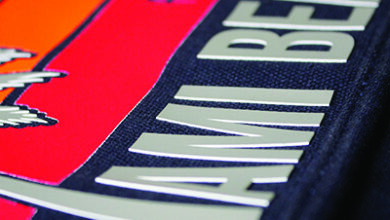The biggest challenge with hard substrates, to me, is dialing in your transfer process on all the different types of items from metal to ceramic, to wood and beyond. Everything has a different thickness, which can transfer heat differently, so making sure you have the right time and temperature is crucial. People like to use the distributor’s recommended settings, but they are giving you an average of what works; your ink set, transfer paper being used, heat press type, and environment determine your exact specification for the perfect transfer. Some of the hard surface substrates can be quite expensive, so you have to test quickly and log all of the details in order to repeat that every time.
You also need to deal with the moisture in the ink, the transfer paper, and the air. When you are working with soft goods, the moisture gets wicked away – not so with hard substrates like metal. The moisture gets trapped at the edges, starts to boil, and leaves a funky-looking edge. Pre-pressing your substrate can help, but making sure you use a blowout sheet of paper, not PTFE sheet but paper both above and below the transfer and substrate, helps the most.
Lastly, you need to determine what items you need to heat through the transfer sheet or through the back of the substrate. Things you can press through the back of the substrate like aluminum work better that way. It gives you more even heat and better colors. Other hard surfaces that dissipate heat, like wood, need to go the other way. Items like ceramics need to be tested as I have done several items both ways and have had different results.
-Aaron Montgomery, 2 Regular Guys, MontCo Consulting



